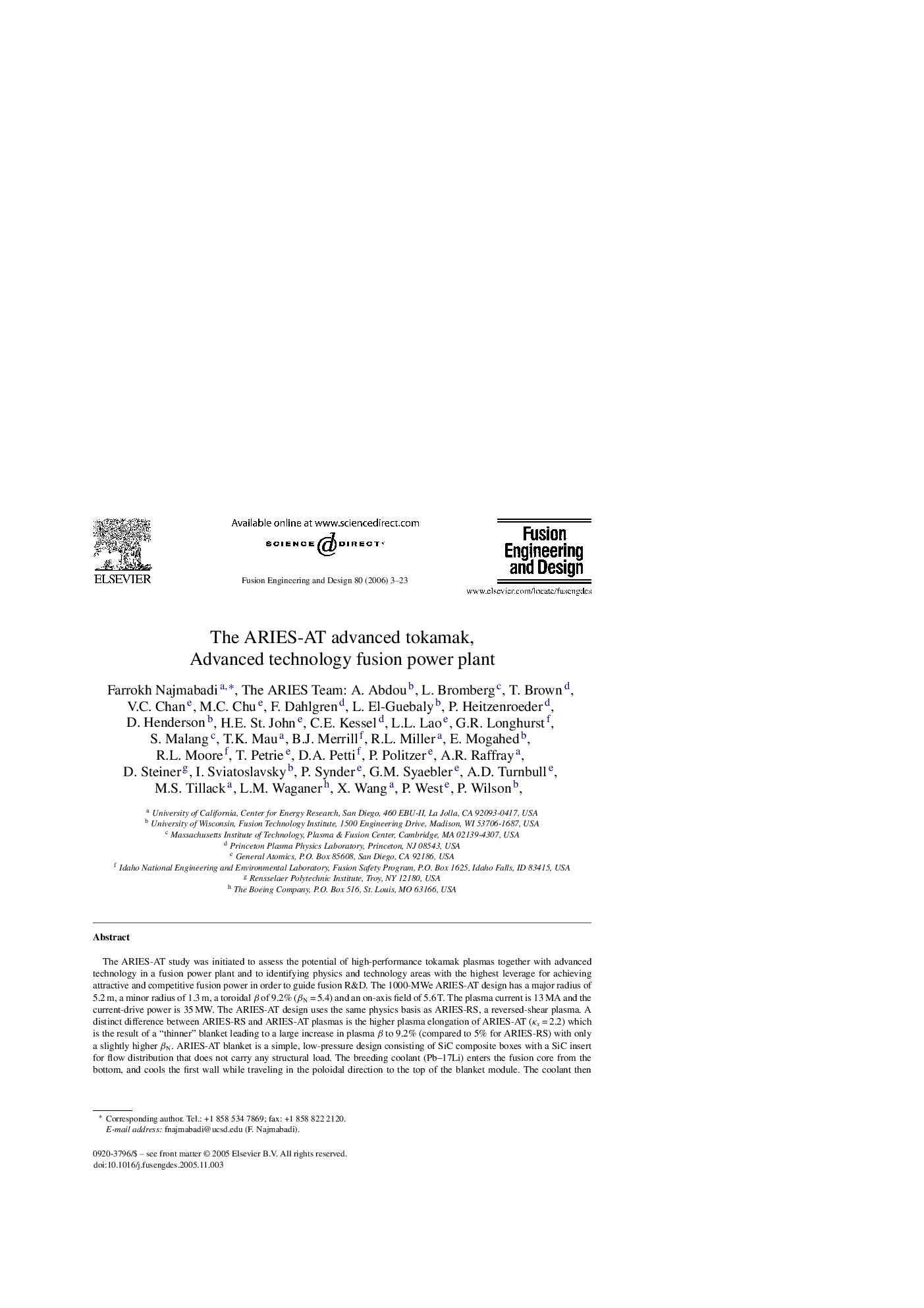| کد مقاله | کد نشریه | سال انتشار | مقاله انگلیسی | نسخه تمام متن |
|---|---|---|---|---|
| 273654 | 505052 | 2006 | 21 صفحه PDF | دانلود رایگان |

The ARIES-AT study was initiated to assess the potential of high-performance tokamak plasmas together with advanced technology in a fusion power plant and to identifying physics and technology areas with the highest leverage for achieving attractive and competitive fusion power in order to guide fusion R&D. The 1000-MWe ARIES-AT design has a major radius of 5.2 m, a minor radius of 1.3 m, a toroidal β of 9.2% (βN = 5.4) and an on-axis field of 5.6 T. The plasma current is 13 MA and the current-drive power is 35 MW. The ARIES-AT design uses the same physics basis as ARIES-RS, a reversed-shear plasma. A distinct difference between ARIES-RS and ARIES-AT plasmas is the higher plasma elongation of ARIES-AT (κx = 2.2) which is the result of a “thinner” blanket leading to a large increase in plasma β to 9.2% (compared to 5% for ARIES-RS) with only a slightly higher βN. ARIES-AT blanket is a simple, low-pressure design consisting of SiC composite boxes with a SiC insert for flow distribution that does not carry any structural load. The breeding coolant (Pb–17Li) enters the fusion core from the bottom, and cools the first wall while traveling in the poloidal direction to the top of the blanket module. The coolant then returns through the blanket channel at a low speed and is superheated to ∼1100 °C. As most of the fusion power is deposited directly into the breeding coolant, this method leads to a high coolant outlet temperature while keeping the temperature of the SiC structure as well as interface between SiC structure and Pb–17Li to about 1000 °C. This blanket is well matched to an advanced Brayton power cycle, leading to an overall thermal efficiency of ∼59%. The very low afterheat in SiC composites results in exceptional safety and waste disposal characteristics. All of the fusion core components qualify for shallow land burial under U.S. regulations (furthermore, ∼90% of components qualify as Class-A waste, the lowest level). The ARIES-AT study shows that the combination of advanced tokamak modes and advanced technology leads to an attractive fusion power plant with excellent safety and environmental characteristics and with a cost of electricity (4.7 ¢/kWh), which is competitive with those projected for other sources of energy.
Journal: Fusion Engineering and Design - Volume 80, Issues 1–4, January 2006, Pages 3–23